最近有一个做医疗器械的客户在找“具有生物相容性要求”的胶粘剂,不知道这个是需要胶水达到FDA认证,还是需要通过ISO 10993的认证,因为在此款产品的TDS资料中就有此一段的说明:“ ISO-10993, An ISO 10993 Test Protocol is an integral part of the Quality Program for LOCTITE® M-31CL™. LOCTITE® M-31CL™ has been qualified to Loctite’s ISO 10993 Protocol as a means to assist in the selection of products for use in the medical device industry.” 简单看上去这个产品好像就是双组分的环氧胶,特殊之处就不得而知了。 摘录TDS如下,有兴趣的朋友可以下载TDS查看之:
PRODUCT DESCRIPTION LOCTITE® M-31CL™ provides the following product characteristics: Technology Epoxy Chemical Type Epoxy Appearance (Resin) Clear colorless to slightly yellow liquidLMS Appearance (Hardener) Clear colorless to slightly yellow liquidLMS Appearance (Mixed) Ultra clear Components Two part - Resin & Hardener Viscosity Low Mix Ratio (by weight) Resin : Hardener 100 : 46 Mix Ratio (by volume) Resin : Hardener 2 : 1 Cure Room temperature cure after mixing Application Bonding LOCTITE® M-31CL™ cures at room temperature once mixed, to form an ultra-clear adhesive bondline with excellent impact resistance and minimal shrinkage. The fully cured epoxy is resistant to a wide range of chemicals and solvents and has excellent dimensional stability over a wide temperature range. Typical applications include bonding, small potting, staking and laminating applications where optical clarity and excellent structural, mechanical and electrical insulating properties are required. LOCTITE® M-31CL™ bonds most materials including glass, optical fibers, ceramics, metals, and many rigid plastics. Suitable for use in the assembly of disposable medical devices. ISO-10993 An ISO 10993 Test Protocol is an integral part of the Quality Program for LOCTITE® M-31CL™. LOCTITE® M-31CL™ has been qualified to Loctite's ISO 10993 Protocol as a means to assist in the selection of products for use in the medical device industry. Certificates of Compliance are available at www.loctite.com or through the Henkel Loctite Quality Department. TYPICAL PROPERTIES OF UNCURED MATERIAL Resin: Specific Gravity@ 25 °C 1.1 Flash Point - See MSDS Viscosity, Brookfield - RVT, 25 °C, mPa·s (cP): Spindle 6, speed 20 rpm 9,000 to 12,000LMS Hardener: Specific Gravity@ 25 °C 1.0 Flash Point - See MSDS Viscosity, Brookfield - RVT, 25 °C, mPa·s (cP): Spindle 5, speed 20 rpm 1,500 to 9,000LMS Mixed: Specific Gravity@ 25 °C 1.07
TYPICAL CURING PERFORMANCE Gel Time Gel time, 100 °C, seconds 90 to 150LMS Working Life Working life, minutes 30 Tack Free Time Tack Free Time is the time required to achieve a tack free surface. Tack Free Time, (low humidity), minutes 160 Cure Speed vs. Time The graph below shows shear strength developed with time on Aluminum (etched & abraded) lapshears @ 25 °C with an average bondline gap of 0.1 to 0.2 mm and tested according to ISO 4587. % of Full Strength on Aluminum Cure Time 100 75 50 25 0 1min 5min 10min 30min 1h 3h 6h 24h 72h TYPICAL PROPERTIES OF CURED MATERIAL Cured @ 25 °C except where noted Physical Properties: Glass Transition Temperature, ASTM E 228, °C 70 Elongation, ASTM D 638, % 8 Tensile Strength, ASTM D 638 N/mm² 55.2 (psi) (8,000) Shore Hardness, ISO 868, Durometer D: Cured @ 22 °C for 16 to 18 hours followed by 2 hours @ 65 °C 80 to 90LMS Electrical Properties: Dielectric Breakdown Strength, IEC 60243-1, kV/mm 19.7 TYPICAL PERFORMANCE OF CURED MATERIAL Adhesive Properties Cured @ 65 °C for 2 hours Lap Shear Strength, ISO 4587: Aluminum (etched & abraded), 0.13 mm gap N/mm² ≥6.9LMS (psi) (≥1,000) Cured @ 22 °C for 5 days Lap Shear Strength, ISO 4587: Steel (grit blasted) N/mm² 21.4 (psi) (3,100)
TYPICAL CURING PERFORMANCE Gel Time Gel time, 100 °C, seconds 90 to 150LMS Working Life Working life, minutes 30 Tack Free Time Tack Free Time is the time required to achieve a tack free surface. Tack Free Time, (low humidity), minutes 160 Cure Speed vs. Time The graph below shows shear strength developed with time on Aluminum (etched & abraded) lapshears @ 25 °C with an average bondline gap of 0.1 to 0.2 mm and tested according to ISO 4587. % of Full Strength on Aluminum Cure Time 100 75 50 25 0 1min 5min 10min 30min 1h 3h 6h 24h 72h TYPICAL PROPERTIES OF CURED MATERIAL Cured @ 25 °C except where noted Physical Properties: Glass Transition Temperature, ASTM E 228, °C 70 Elongation, ASTM D 638, % 8 Tensile Strength, ASTM D 638 N/mm² 55.2 (psi) (8,000) Shore Hardness, ISO 868, Durometer D: Cured @ 22 °C for 16 to 18 hours followed by 2 hours @ 65 °C 80 to 90LMS Electrical Properties: Dielectric Breakdown Strength, IEC 60243-1, kV/mm 19.7 TYPICAL PERFORMANCE OF CURED MATERIAL Adhesive Properties Cured @ 65 °C for 2 hours Lap Shear Strength, ISO 4587: Aluminum (etched & abraded), 0.13 mm gap N/mm² ≥6.9LMS (psi) (≥1,000) Cured @ 22 °C for 5 days Lap Shear Strength, ISO 4587: Steel (grit blasted) N/mm² 21.4 (psi) (3,100)
Chemical/Solvent Resistance Cured for 5 days @ 22 °C, on steel, aged under conditions indicated and tested @ 22°C % of initial strength Environment °C 500 h 1000 h Air 87 155 150 Motor oil (10W-30) 87 160 145 Unleaded gasoline 87 120 110 Water/glycol 50/50 87 145 140 Salt fog 22 70 85 95% RH 38 105 115 Condensing Humidity 49 90 90 Water 22 100 90 Acetone 22 100 105 IPA 22 120 120 Effects of Sterilization In general, products similiar in composition to LOCTITE® M-31CL™ subjected to standard sterilization methods, such as EtO and Gamma Radiation (25 to 50 kiloGrays cumulative) show excellent bond strength retention. LOCTITE® M-31CL™ maintains bond strength after 1 cycle of steam autoclave. It is recommended that customers test specific parts after subjecting them to the perferred sterilization method. Consult with Loctite® for a product recommendation if your device will see more than 3 sterilization cycles. GENERAL INFORMATION This product is not recommended for use in pure oxygen and/or oxygen rich systems and should not be selected as a sealant for chlorine or other strong oxidizing materials. For safe handling information on this product, consult the Material Safety Data Sheet (MSDS). Directions for use 1. For high strength structural bonds, remove surface contaminates such as paint, oxide films, oils, dust, mold release agents and all other surface contaminates. 2. Use gloves to minimize skin contact. DO NOT use solvents for cleaning hands. 3. Dual Cartridges: To use simply insert the cartridge into the application gun and start the plunger into the cylinders using light pressure on the trigger. Next, remove the cartridge cap and expel a small amount of adhesive to be sure both sides are flowing evenly and freely. If automatic mixing of resin and hardener is desired, attach the mixing nozzle to the end of the cartridge and begin dispensing the adhesive. For hand mixing, expel the desired amount of the adhesive and mix thoroughly. Mix for approximately 15 seconds after uniform color is obtained. 4. For maximum bond strength apply adhesive evenly to both surfaces to be joined. 5. Application to the substrates should be made within 30 minutes. Larger quantities and/or higher temperatures will reduce this working time. 6. Join the adhesive coated surfaces and allow to cure at 25 °C for 24 hours for high strength. Heat up to 93 °C, will speed curing. 7. Keep parts from moving during cure. Contact pressure is neccesary. Maximum shear strength is obtained with a 0.1 to 0.2 mm bond line.
8. Excessive uncured adhesive can be cleaned up with
ketone type solven
下载附件查看TDS:
M-31CL (66.4 KB, 8 次)
您没有权限下载此文件。


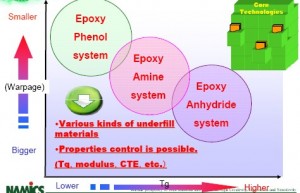
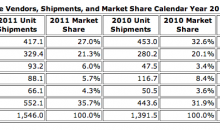
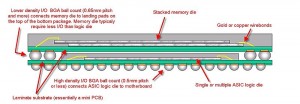
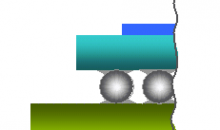
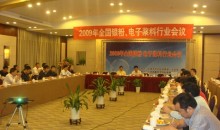
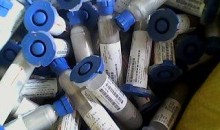
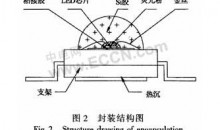

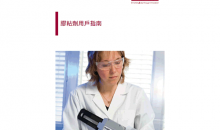
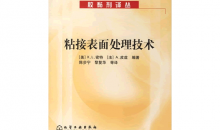
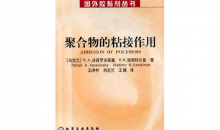
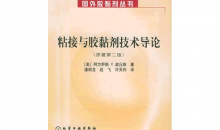
已有 1 个评论
联系站长
Email:Anndiqiu#Gmail.com
Mobile Phone:13923499497
热门文章
数字
$2,242.7 Million Explore Global laminating adhesives market that is poised to be worth $2,242.7 million by 2019 了解更多 »